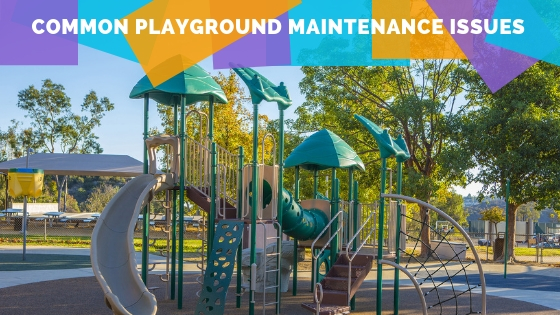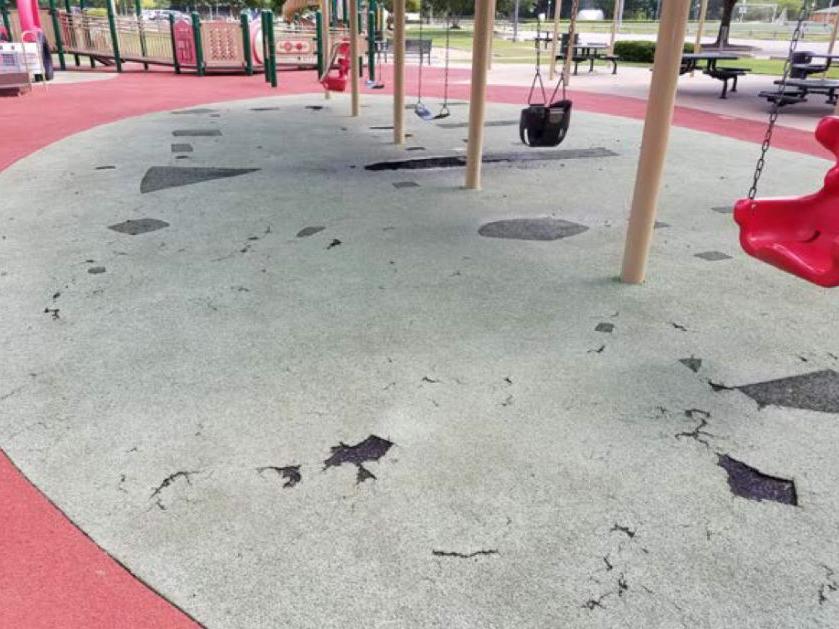The National Recreation & Park Association (NRPA) and Certified Playground Safety Inspector (CPSI) Curriculum state that 1-in-3 playground injuries are a result of a lack of or improper playground maintenance. However, a playground should be a safe haven for children of all ages. Avoid unnecessary accidents with these 10 playground maintenance best practices.
Have a Playground Maintenance Plan
Playground maintenance is often a low priority. Lack of maintenance is a serious problem when you consider the typical lifespan of playground equipment is 15-20 years. Some organizations simply don’t have the staff to maintain their playground or just don’t know what conditions to look for. However, everyone who associates with your playground has a role in providing safe play for children.
Above all, a proper inspection prevents costly accidents before they happen. Protect your organization from injury-related lawsuits with thorough record-keeping and corrective actions, and consult a professional when necessary.
There are two types of playground inspections you should perform: low-frequency and high-frequency.
Low-Frequency
Low-Frequency playground maintenance takes place every quarter or every six months, depending on the use of your playground. As a result, these inspections are more in-depth and require extensive knowledge of play equipment standards. Types of maintenance may include: replacing worn swing set chains, treating any rust or corrosion, and much more. See a complete list below.
General Safety
- No exposed, cracked, or loose post and component footings
- Clamps show no sign of slippage, cracking, or failure
- Clamp drive rivets and hardware are secure
- Welds are intact and free of cracks
- Slide and Deck Enclosures
- Overhead Activities
- Climbers
- No rust or corrosion
- Check for integrity of the plastic, keep plastic clean of any extraneous substances.
- Verify that any deformations do not create entrapment as specified on ASTM F-1487 section 6.
- No scratched, chipped, or peeling paint
- Metal parts show no visible cracks, bending, warping, or breakage
- Bolts & nuts and fasteners are tight
- Joints are secure (pay special attention to sectional slides, flush-mounted decks, and pipe connections
- Lubricate swivels, bearings, grease fittings, and moving parts (pay special attention to tire swings, tot swings, strap swings, track rides, and trapeze rings)
- Repair/Replace broken or missing parts
- No sharp edges or unsafe protrusions (check metal corners, bolts, etc.)
- No exposed mechanisms, junctions of moving parts, or components are posing possible pinch or crush points
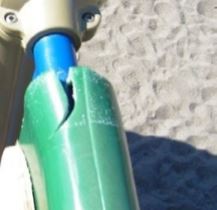
This cracked component is a hazard. 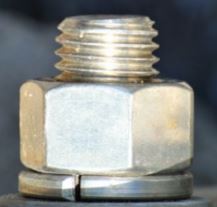
More than two threads are showing, so this component is a protrusion hazard. 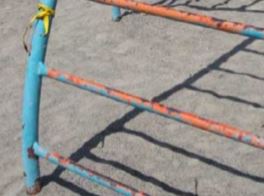
Chipped paint on this equipment should be addressed and repainted 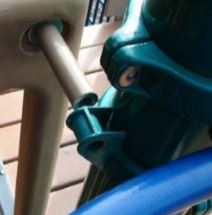
Hardware is missing and causing the component to come apart. 
This tear could be an entanglement hazard. 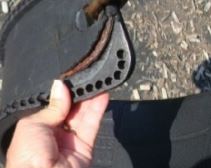
This belt swing is tearing and should be replaced.
Independent Play & Swings
- Check for cracked plastic
- All slide supports/anchors are intact and secure
- Close ‘S’ hooks and ensure they are not excessively worn
- Clatter bridge chain and connections are not excessively worn
- No exposed metal or swing seats
- Tire swing swivel rubber sleeve is in place and not excessively worn
- Swing chains are in good condition and not excessively worn, especially at connection points
- Connectors and chain have free movement
Loose Fill Surfacing & Surrounding Area
- No scattered or excessively worn mulch, especially in the area at the end of slides and under swings
- Surfacing material is adequately deep and retains its fall absorbing abilities as specified at the time of installation
- The border around the playground is in good condition and has not come loose
- No roots, rocks, or other objects are causing a tripping or injury hazard
Unitary Surfacing
Next, a general playground maintenance routine for unitary surfacing should take place once a month at a minimum. For instance, broom, vacuum, blow or hose off the entire surface to remove any loose debris. Examples of debris include sand, dirt, leaves, tree sap, chewing gum, bird droppings, scuff marks, etc.
- To avoid evaporation, try to clean during early morning or late afternoon
- First, hose the area down with water prior to applying the cleaning solution
- Secondly, clean only a small area at a time to eliminate the possibility of dirty spots or streaks.
Isolated Stains: In addition, on heavy stains, apply a layer of full strength, all-purpose cleaner using a hand-held spray bottle. Scrub thoroughly with a medium baseline bristle scrub brush.
Cleaners to Avoid
Avoid the following chemicals as they can be detrimental to the safety of children, safety surface, and playground equipment:
- Chlorine
- Bleach
- Disinfectants
- Gasoline
- Diesel
- Hydraulic and Lubricating Oils
- Acetone
- Mineral Spirits
- Solvents (including Organic Solvents)
Never use a steel or hard plastic brush on manual or electric cleaning units on unitary surfacing.
High-Frequency
Finally, high-frequency playground maintenance occurs on a regular basis, typically daily or weekly. Common issues to look for are mulch surfacing depths, sanitation issues like trash or debris in the play area, tripping hazards, and vandalism.
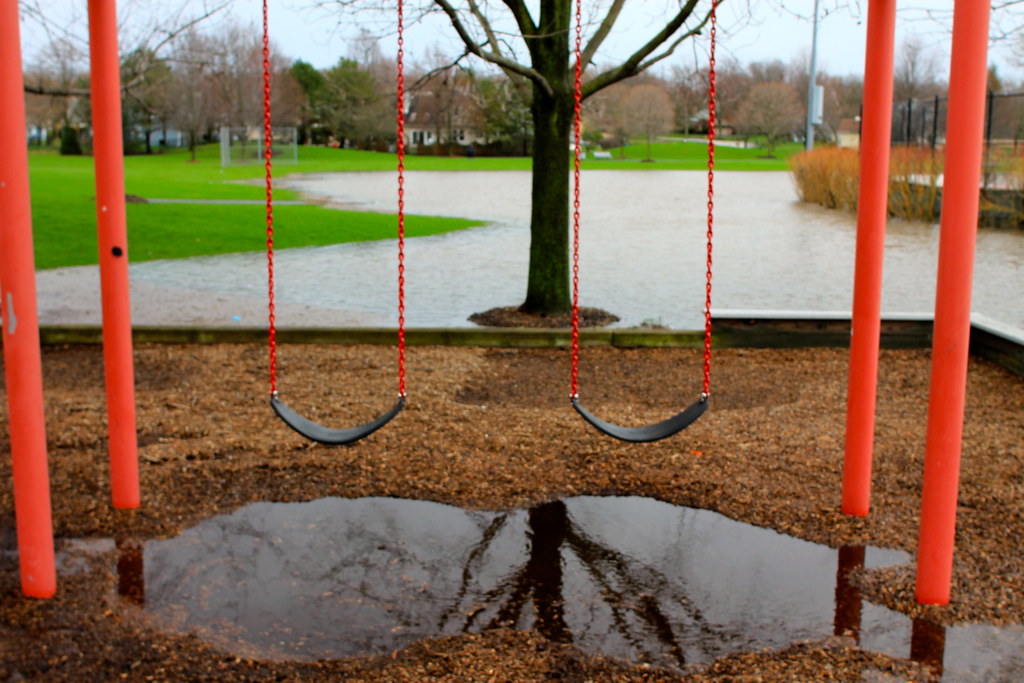
Visually check to see if the area is free from standing water and that drains are clear and working. 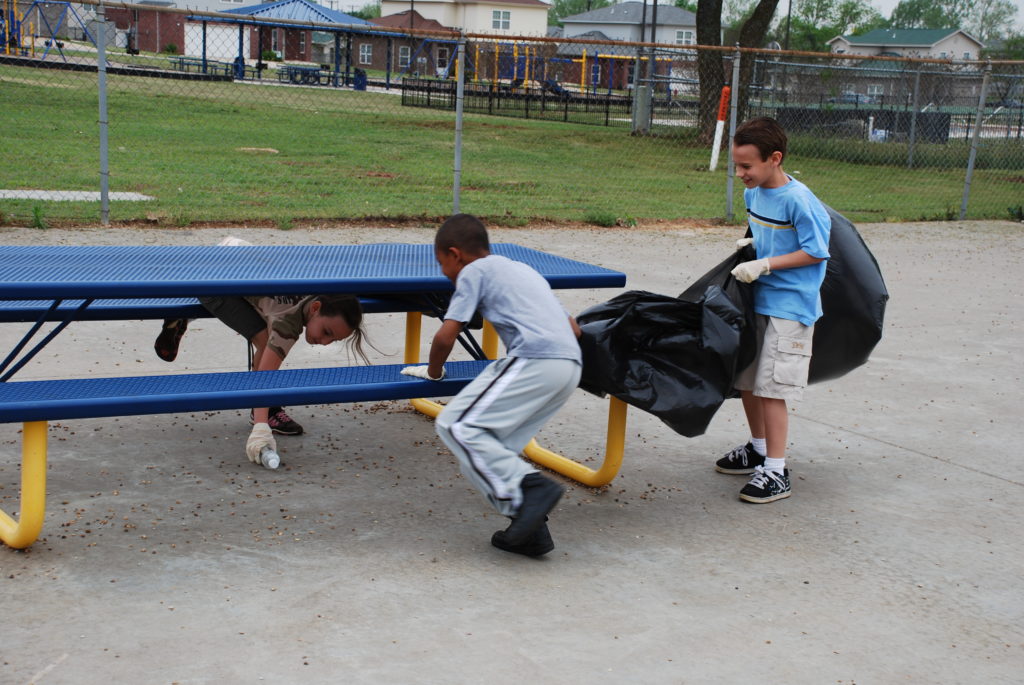
The play area should be cleaned of trash, broken glass, tree limbs, and other items that may be hazardous.
Complete Playground Maintenance Task List
For a downloadable list of low-frequency playground maintenance items, download our free Playground Maintenance Checklist. Reach out to one of our in-house project managers at 800-853-5316 to ask about our playground maintenance program!
